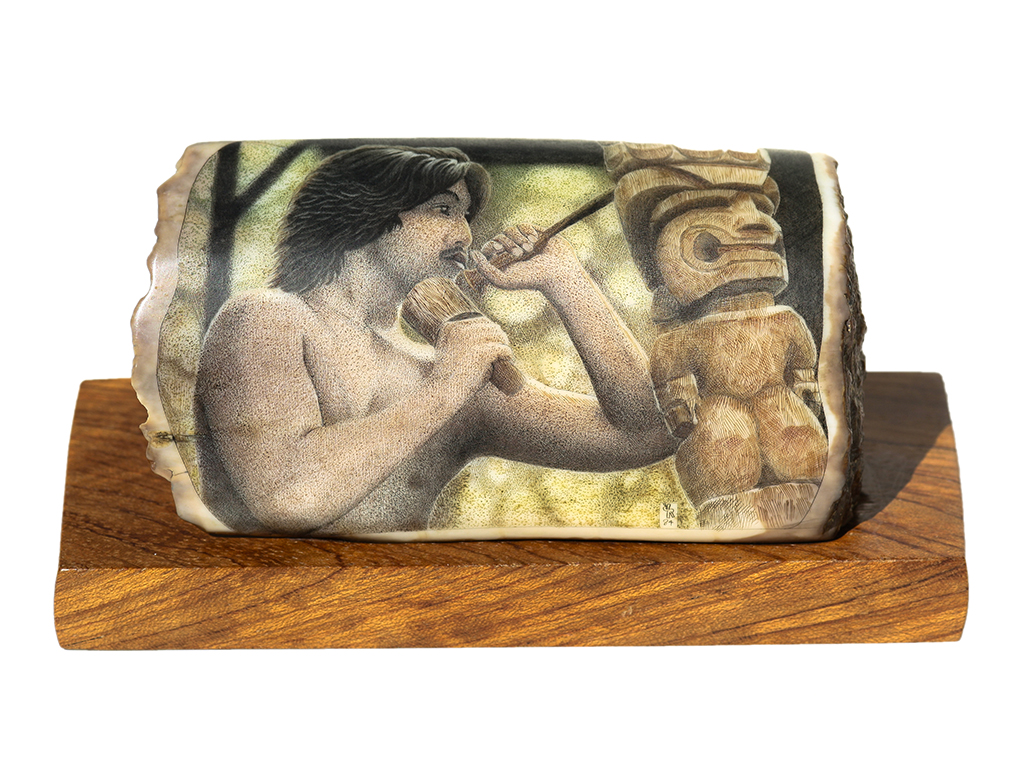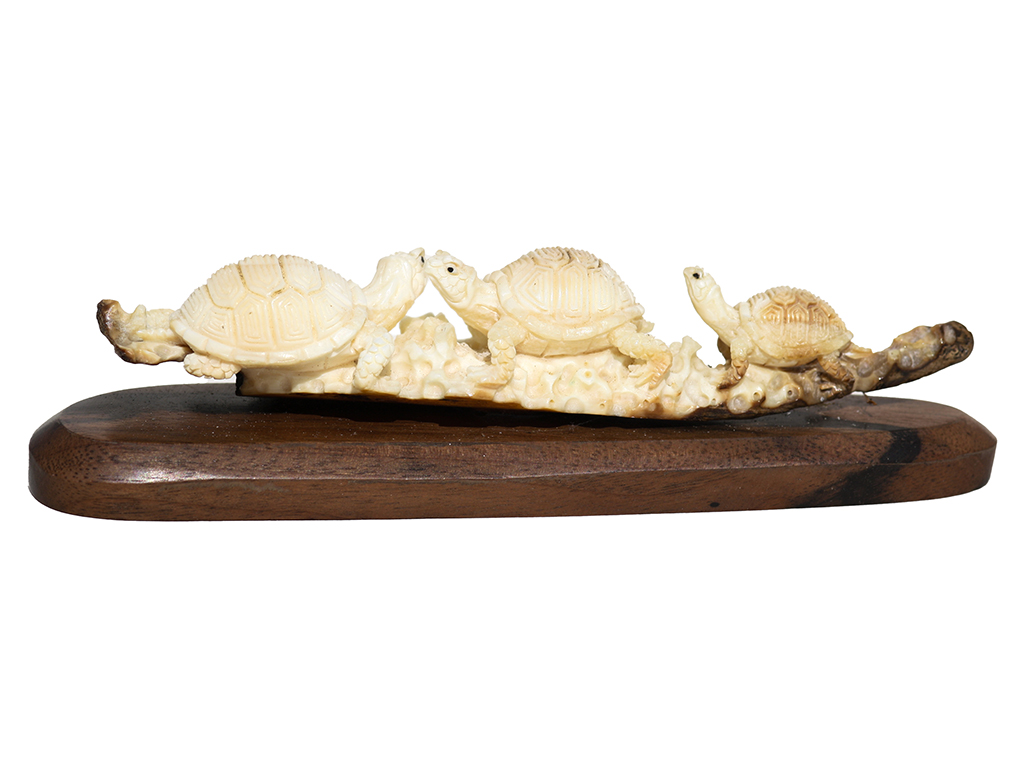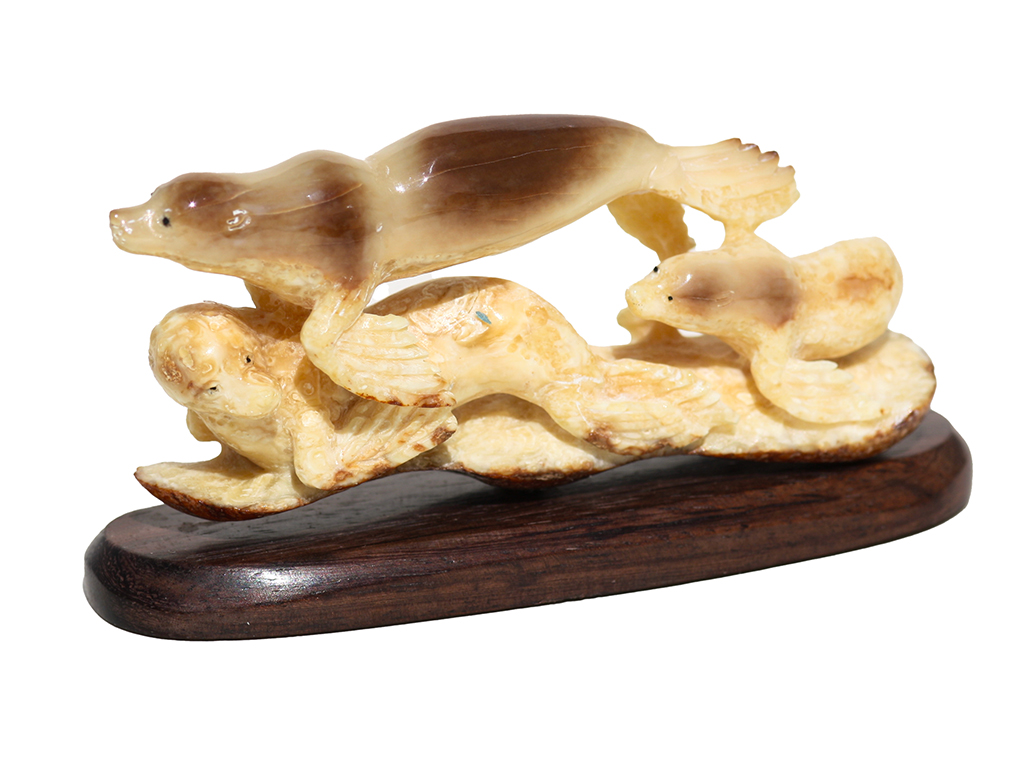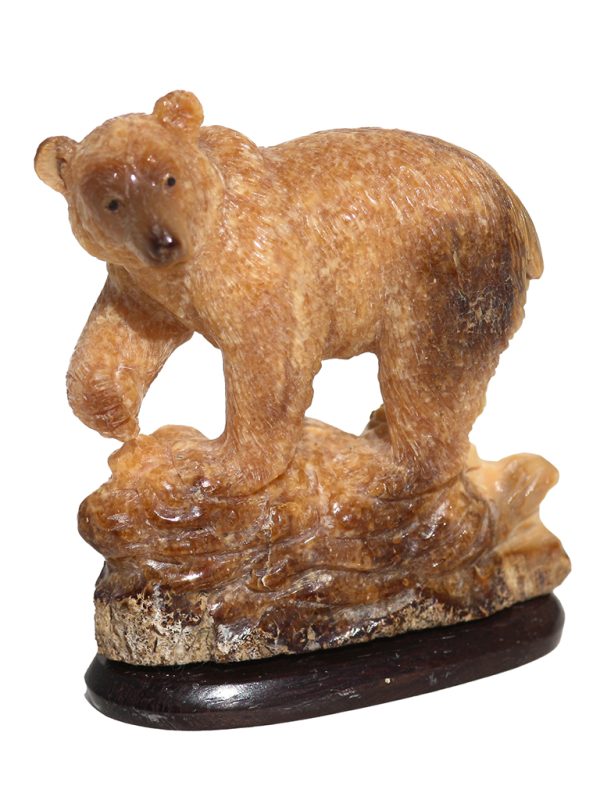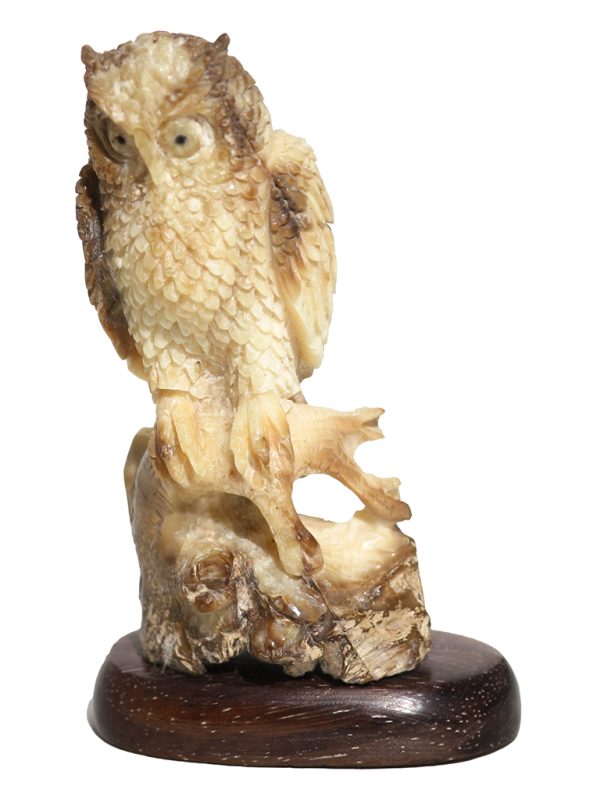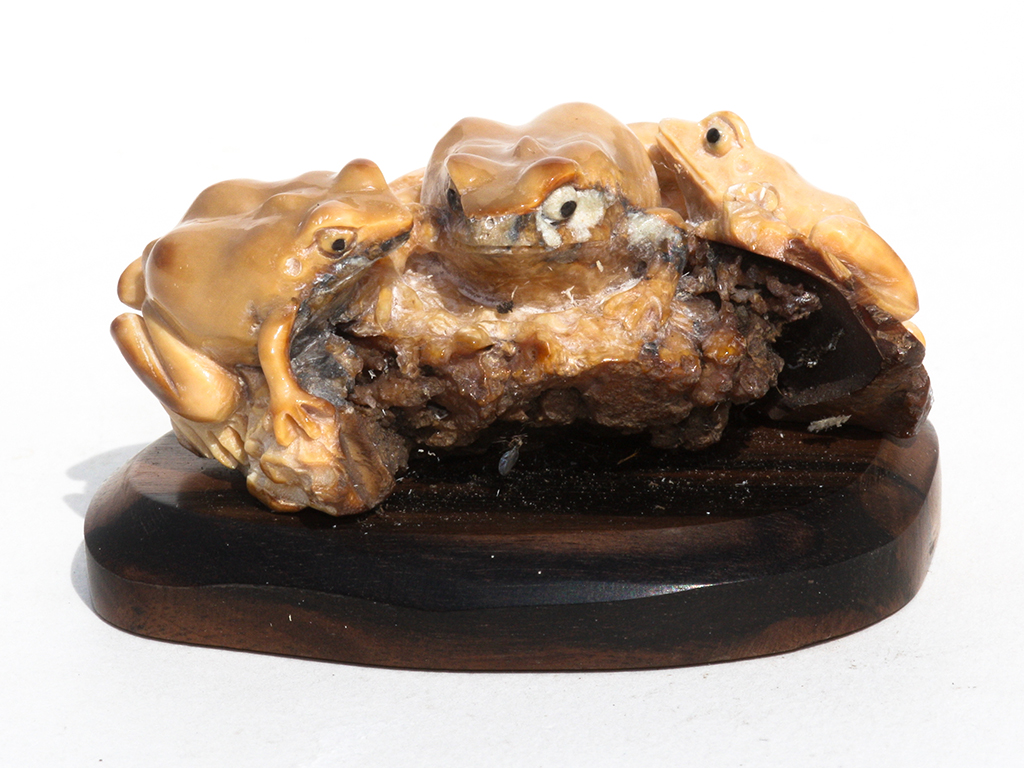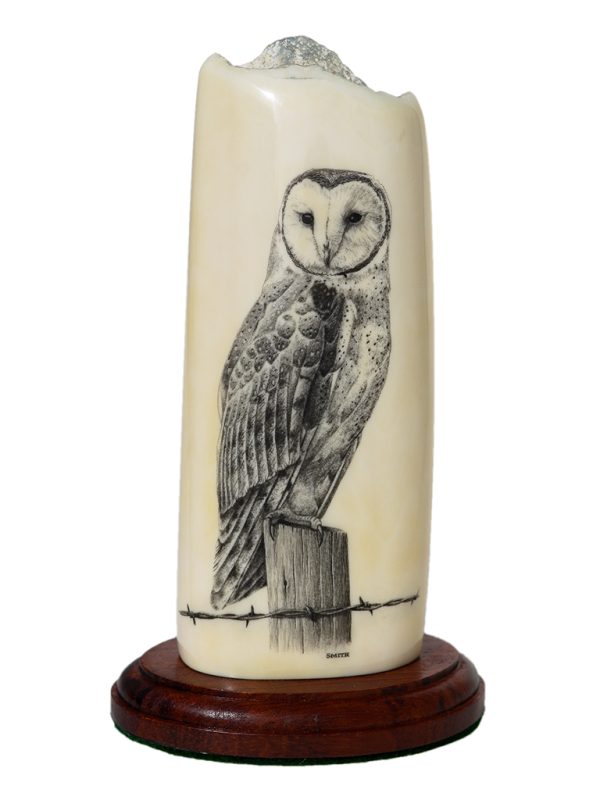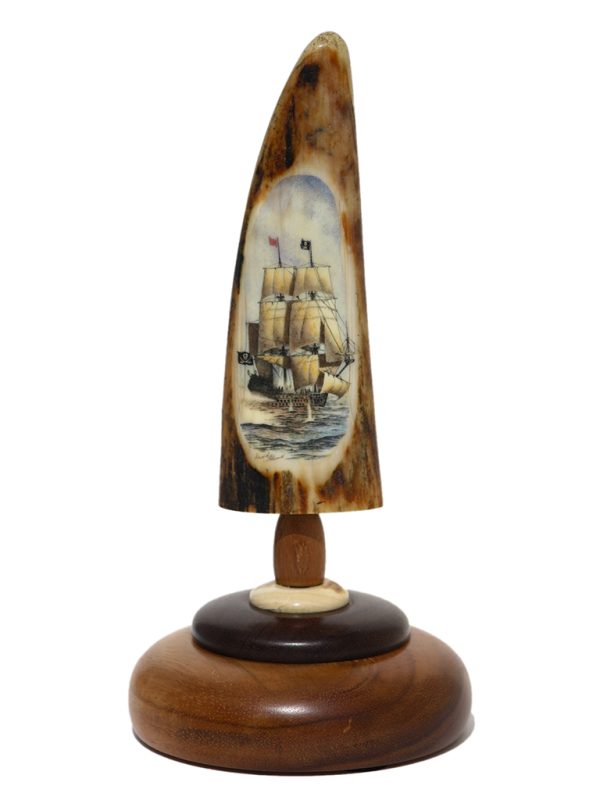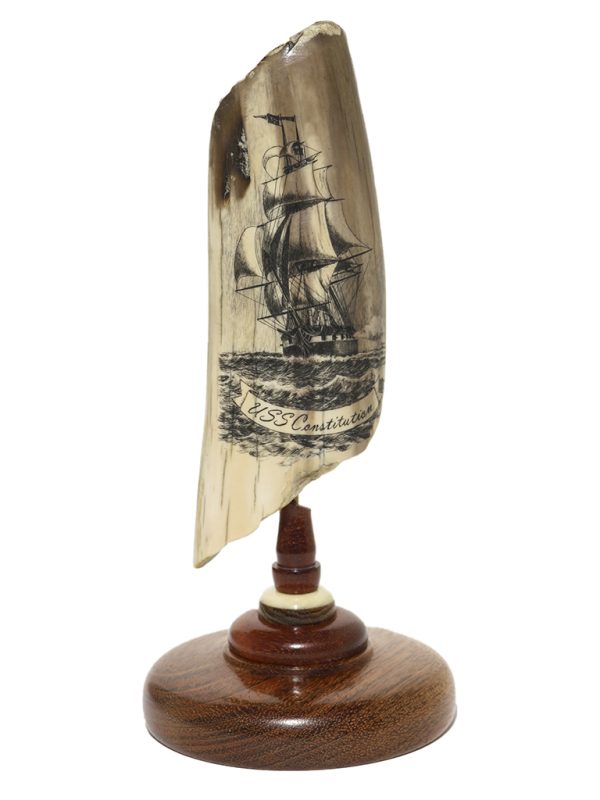“Tiki Carver at Work” color scrimshaw on ancient walrus tusk ivory by Robert Sickles. Rare work by Sickles created in 1984 from the collection of a client who is no longer with us. Sickles was influenced by the late Kelly Mulford as can be seen in this masterful work. Mulford was generous with his time and advice and Sickles was a very good student, obviously. Sickles’ work is seldom seen on the open market today as most collectors are loath to part with their prized works by Sickles. Excellent opportunity to add a rare Robert Sickles to one’s collection at 1984 prices.
“Turtle Family Sunning” complete turtle family carving on ancient walrus tusk ivory created by talented unknown carver. Perfect day to catch a few rays for the turtle family. Carver made excellent use of the tapered piece of walrus ivory. Nicely done.
“Sea Lion Family” intricate carving created by talented unknown artist on ancient walrus tusk ivory. Beautiful color in the ancient walrus tusk ivory gives the impression of the coat of the larger sea lion. Really admire the talent of the carver in this one. Excellent addition to any collection.
“Brown Bear Carving” created by talented unknown carver on ancient walrus tusk ivory, this well done work is the perfect choice for the colorful ivory. The marvelous color is the result of minerals that have been absorbed into the ivory over the years. A very well done piece, indeed. Love the guy’s face.
“Carved Hoot Owl” created by talented unknown carver on ancient walrus tusk ivory. Vigilant owl perched on tree branch is looking for prey. Excellent detail here. Every feather is picture perfect. Beautiful color the result of minerals absorbed into the walrus tusk over hundreds of years. A keeper!
“Cool Frog Family” created by talented unknown carver on colorful ancient walrus tusk ivory. Excellent color in the ivory is the result of minerals that have been absorbed into the ancient walrus tusk over hundreds of years when it was underground in the Northern Bering Sea area. Note the high polish on the frogs, extremely difficult to achieve. Really admire this one.
“Barn Owl Watching” black and white scrimshaw on ancient walrus tusk ivory slab by David Smith. Alert barn owl scouring a field looking for a meal. Nice touch with the barbed wire. Note how the light on the fence post comes from the left. Small details like this set Smith’s work apart. The barn owl is the most widely distributed species of owl in the world and one of the most widespread of all species of birds. Done on a very large slab of walrus ivory, this is from the collection of one of our clients who is no longer with us.
“The WANDERER in New Bedford Harbor” black and white scrimshaw on large ancient walrus tusk ivory artifact by James W. Lee. Heavy ice axe (1lb 8.5 oz) perfect for this panoramic view of the busy New Bedford Harbor in the heyday of the whaling era. Scrimshander Lee captures the essence of the harbor by showing the masts of countless other whalers. The detail on Wanderer is incredible. See the stern with the name and home port. Nicely done. Note the shed at the left with missing shingle on the roof. Great work on a substantial artifact. From the collection of one of our clients who is no longer with us. A keeper.
“Pirate Ship Attack” color scrimshaw on ancient walrus tusk ivory by David Adams. Pirates flying the Jolly Roger engage an unseen quarry. Judging from the cannon on the pirate ship, the end will be quick. Extraordinary detail by scrimshander, Adams, on this one. Impressive strand completes the picture. A winner all the way around.
“Old Ironsides in Storm” black and white scrimshaw on ancient walrus tusk ivory by Gerry Dupont. Dramatic rendering of famous warship in stormy weather. Carrying all of her sails, Old Ironsides will probably outrun the weather. Scrimshander, Dupont, has taken full advantage of the color in the walrus tusk to create the dark, gloomy atmosphere. Great touch by one of the best. Handsome stand completes the picture.

